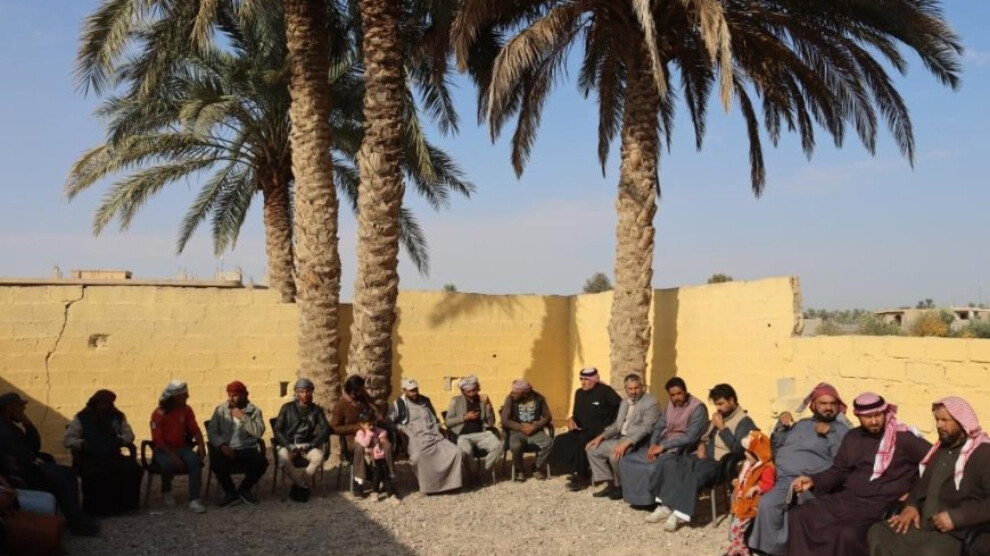Fez’a culture in Deir ez-Zor reflects a model of communal living
The Fez’a tradition in Deir ez-Zor builds unity and strengthens social solidarity.
The Fez’a tradition in Deir ez-Zor builds unity and strengthens social solidarity.

The term Fez’a is an Arabic word that, when translated directly, means “help and solidarity.” In the Deir ez-Zor Canton, the roots of Fez’a culture lie deep within traditional tribal customs. This practice, which emphasizes mutual aid during times of mourning, celebration, agricultural work, or home construction, forms the foundation of communal life in the region. Fez’a not only fosters cooperation among neighbors but also activates a sense of collective conscience by encouraging humanitarian support for those in need, particularly poor and vulnerable families.
Acts of assistance and solidarity are carried out spontaneously, without invitation or formal planning. For this reason, the people of the region preserve and uphold Fez’a as a legacy of an ethical and political society.
Women and youth play an active role
In the Fez’a tradition, women and young people play an active role in all forms of communal life, from building and repairing homes to organizing social campaigns and participating in harvesting and planting.
Elders also have a significant place in this culture. Drawing on their long life experiences, they offer guidance and wisdom through advice and storytelling.
Khalid al-Ibed, a resident of Hajin (Hecîn) in Deir ez-Zor Canton and a leading participant in preserving the Fez’a tradition, told ANHA News Agency: “We help each other because we see ourselves as responsible for our land and our people. Fez’a is still a living and beloved tradition in our society. What we practice is not short-term or temporary aid. It is a symbol of solidarity between families, relatives, and neighbors. Since childhood, we have witnessed people coming together during the harvest season, while picking cotton, or in many other tasks that require collective effort.”
As an example of this tradition in action, al-Ibed added, “Today, a group of young people from Hajin gathered to harvest barley by hand in a neighbor’s field.”
He emphasized that they do not wait for help from outside sources: “We offer assistance to our neighbors, relatives, and community as a humanitarian duty. And those we help return the favor with the same sense of responsibility. This is not a new tradition, it is a valuable legacy passed down from our ancestors, and we want to preserve it.”
Anas Abdullatif, another community member living in accordance with the Fez’a tradition, expressed similar views: “We do not see helping others as a simple or temporary obligation. This tradition, which prevails across our society, is based on the principle of living together that we inherited from our elders and our tribal heritage. We want to pass it on to our children. We are a people who sustain this tradition as a living history, without distinction between old and young, men and women, everyone participates according to their ability.”
‘Like a flowing river…’
Anas Abdullatif likened the act of helping others to a flowing river and stated, “If the river stops flowing, it dries up. That’s why we try to raise our children, the next generation, in accordance with the Fez’a tradition. We are working to build awareness among them based on solidarity and our principle of living together. For us, abandoning the Fez’a culture means abandoning our roots.”
He also expressed hope that the Fez’a tradition, as a model of communal life, would remain relevant within society and that the humanitarian values it fosters would extend beyond the region. He said, “Fez’a should not be seen as an ordinary tradition. For us, it is a school where we learn the values of humanity and the meaning of communal life through solidarity.”